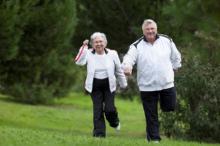In 2009, the prevalence of no physical activity was 53% higher in adults with arthritis than those without, based on the latest data from the Behavioral Risk Factor Surveillance System. The findings were published online in the Centers for Disease Control and Prevention’s Morbidity and Mortality Weekly Report on Dec. 8.
From 2002 to 2008, the percentage of all adults in the United States who reported no physical activity stagnated at 25%, regardless of their arthritis status. The growing subset of adults with arthritis who tend to be sedentary because of their barriers to activity may have contributed to that stagnation, according to the CDC researchers.
"Further reduction in the prevalence of no leisure-time physical activity (LTPA) among all adults might be hindered by population subgroups that have exceptionally high rates of no LTPA, such as adults with arthritis," the researchers noted.
The researchers reviewed data from 432,607 adults aged 18 years and older who responded to telephone surveys. The study population included respondents from all 50 states, the District of Columbia, and all U.S. territories (MMWR 2011;60:1641-45).
Adults with arthritis accounted for at least 20% of all adults reporting no LTPA in each state, ranging from 21% in Minnesota to 43% in Tennessee.
Survey respondents were defined as "no LTPA" if they answered no to the question, "During the past month, other than your regular job, did you participate in any physical activities or exercises such as running, calisthenics, golf, gardening, or walking for exercise?"
Survey respondents were defined as having arthritis if they answered yes to the question, "Have you ever been told by a doctor or other health professional that you have some form of arthritis, rheumatoid arthritis, gout, lupus, or fibromyalgia?"
The findings are not surprising, given the disease-specific barriers to physical activity experienced by people with arthritis, the researchers wrote.
"However, these barriers can be addressed through targeted health communication messages; increased access to arthritis-appropriate, individually adapted behavior change programs; and relevant policy and environmental changes," they added.
The study results were limited by several factors, included the use of self-reports and the lack of including household, occupational, or transportation-related activities as LTPA.
The findings, however, support data from previous studies showing increased rates of physical inactivity in adults with arthritis, and they highlight the need to target these individuals with physical activity promotion initiatives that are arthritis specific, the researchers noted.
"Health care providers and public health physical activity practitioners should counsel arthritis patients regarding the benefits of physical activity and refer them to physical or occupational therapy if indicated or to locally available arthritis-appropriate physical activity programs," they said.
The study was conducted by the Centers for Disease Control and Prevention.


